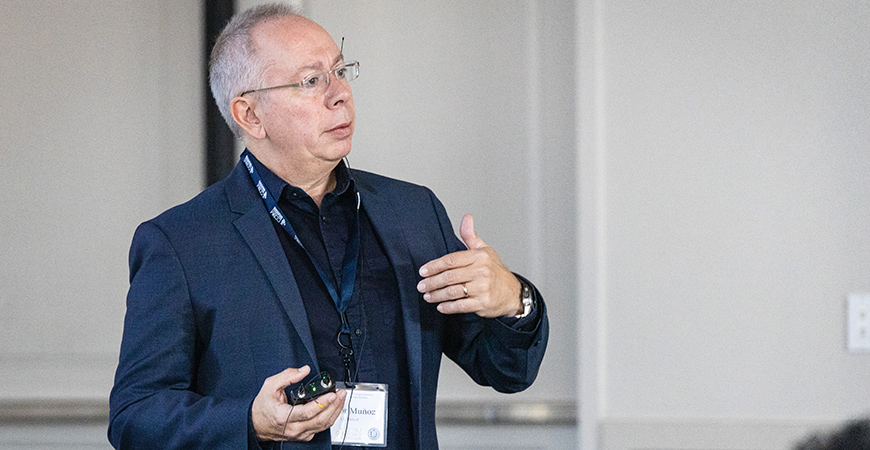
Proteins are miniscule machines inside the body, about 10,000 times smaller than the thickness of human hair. They control all the processes of life — like how cells communicate to each other, how the immune system combats infection, how muscles contract, and how oxygen is picked up in the lungs and delivered to those very same muscles.
Proteins can do all of this because they change shape, assemble and interact with other biomolecules in response to specific cues. This general property makes proteins extremely attractive targets for a variety of applications in medicine, environment, food industry and energy. But it also has proven very difficult to harness. Now, bioengineering Professor Victor Muñoz has made a key discovery that could allow scientists to engineer adaptive proteins and convert them into powerful technological applications, including smart medicines.
In a paper published Dec. 13 in Nature Communications, Muñoz and a team of researchers describe how they were able to engineer proteins to form assemblies, dissociate and change shape in response to signals. The discovery could allow scientists to, for example, use proteins to deliver drugs in a way that is less toxic and more targeted than current practices.

Proteins in their natural state are easily passed through the kidney, meaning they are not in the blood long enough to act as an effective medicine.
“But when a protein makes an assembly,” Muñoz said. “It forms structures that are larger and sturdier and don’t get secreted out of the kidney. They stay in the blood for a longer time.”
Muñoz, who is director of UC Merced’s Center for Cellular and Bio-Molecular Machines (CCBM-CREST), said research for this project began a decade ago and has involved collaboration from several groups around the world. The work to figure out how to engineer proteins to act as nanomachines has been challenging and tortuous.
“They do all these complicated things and are so small. That means their design principles and organization are incredibly sophisticated,” he said. “People have been able to design proteins that will form particular assemblies of many different shapes, but they have not been able to make them adaptive so they switch their shape and properties in response to stimuli.”
"This opens the gate for developing drugs that are based on proteins in a way they could be delivered as inactive assemblies that remain in the blood as needed to then be activated on cue at a given time or in a specific location in the body."
The discovery may lead to important applications in biosensor research, medicine, diagnostics, vaccines, bioremediation — “anything you could imagine,” Muñoz said.
In medical applications, for example, proteins engineered this way could become a new technology for the smart delivery of specific drugs.
This would have enormous advantages over conventional drugs, which are much less specific, more toxic and can cause a range of harmful side-effects. It could also help store an inactive version of the protein in blood for a relatively long time, eliminating the short lifespan curse of current protein pharmaceuticals.
“This opens the gate for developing drugs that are based on proteins in a way they could be delivered as inactive assemblies that remain in the blood as needed to then be activated on cue at a given time or in a specific location in the body,” Muñoz said.
The next step, Muñoz said, will be to try the process in other systems and see whether it can be generalized. “This was a proof of concept. Next, we’d like to target systems that have more interesting applications — to exploit the possibility of making this into a real technology that’s useful.”






